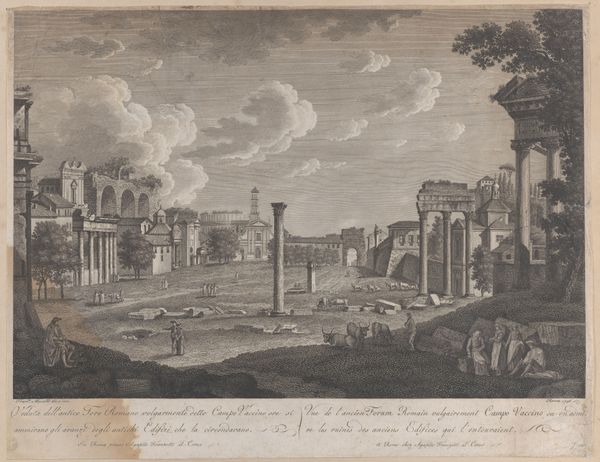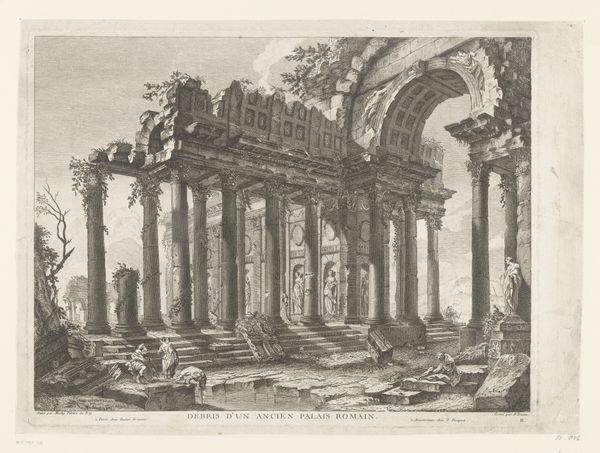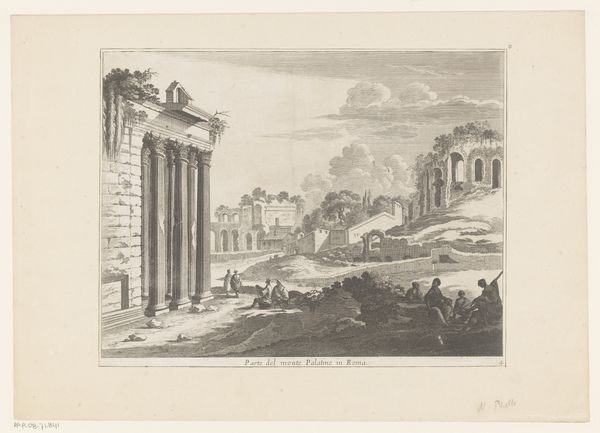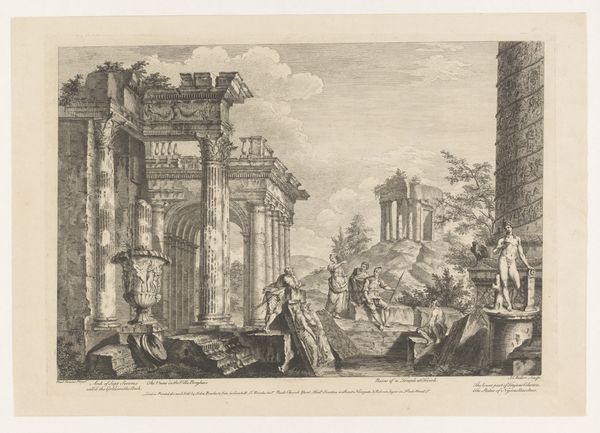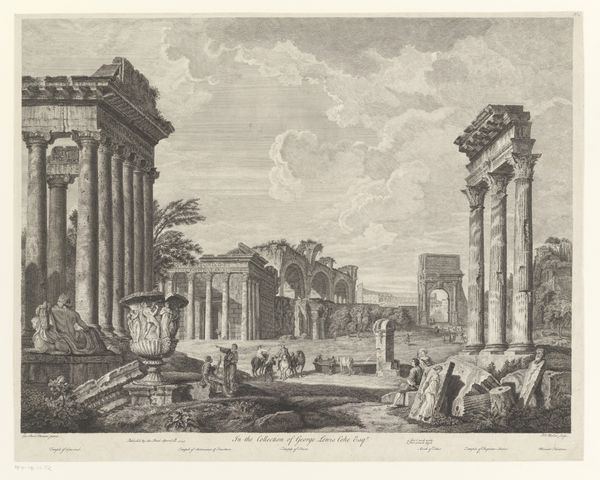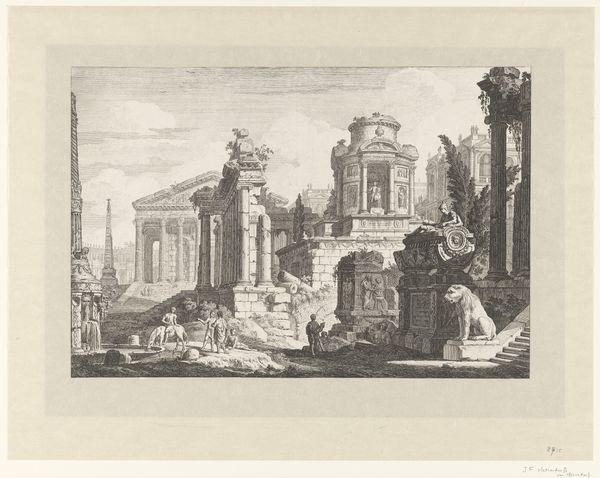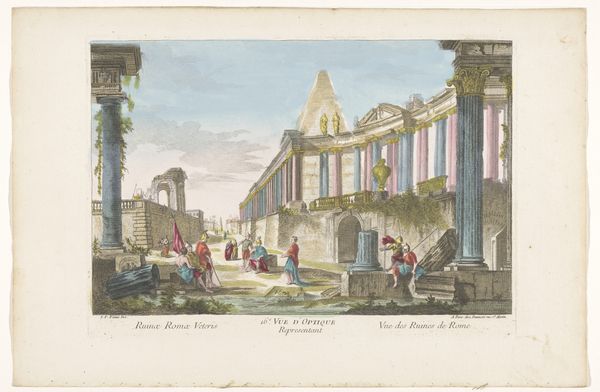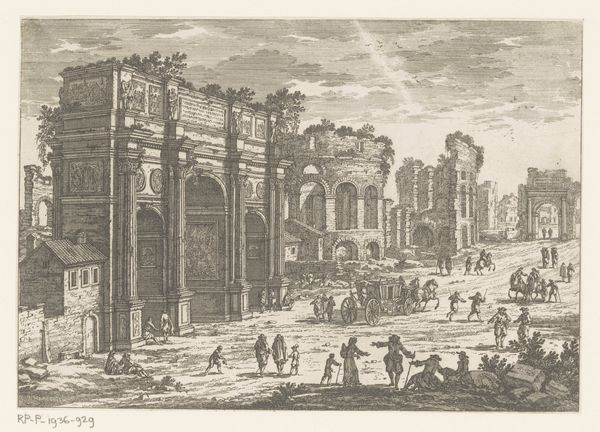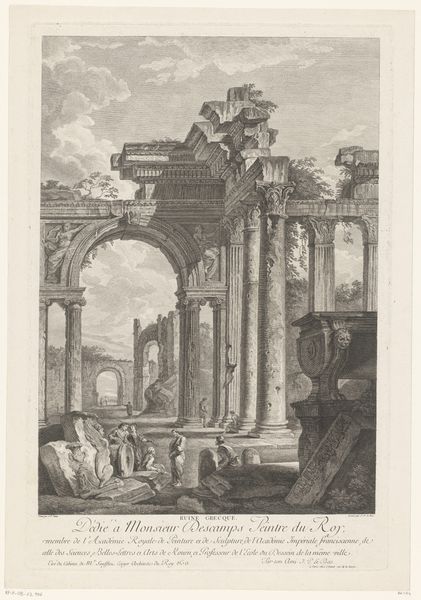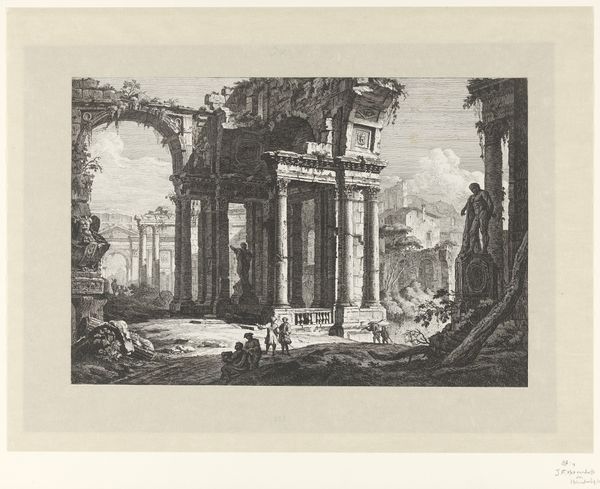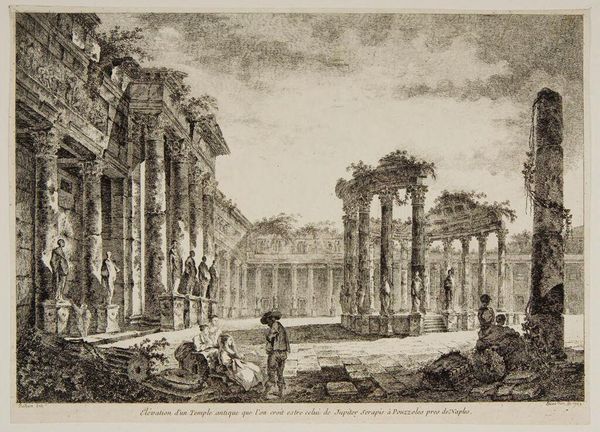
print, sculpture, engraving
#
aged paper
#
baroque
# print
#
old engraving style
#
landscape
#
classical-realism
#
figuration
#
11_renaissance
#
sculpture
#
cityscape
#
history-painting
#
engraving
Dimensions: height 268 mm, width 380 mm
Copyright: Rijks Museum: Open Domain
Curator: Here we have "Figuren temidden van Romeinse ruïnes," or "Figures Amidst Roman Ruins," potentially dating back to 1749, attributed to Paul Angier, here at the Rijksmuseum. It’s an engraving. What's your immediate take? Editor: There’s a quiet grandeur to it, a ghostly stillness. It feels less like a depiction of specific ruins and more like a stage set. Curator: Angier, known primarily as an engraver, was instrumental in popularizing architectural views and capriccios during a period of intense interest in classical antiquity. Consider the timing; mid-18th century. Excavations at Herculaneum and Pompeii had sparked a continent-wide Roman fever. Editor: "Roman fever"—love it! I imagine Angier, pen in hand, surrounded by dog-eared texts, trying to piece together a vanished world. It’s less about architectural accuracy, I think, and more about conjuring a feeling. Look at the figures in the foreground – they seem dwarfed, almost incidental, in the face of these looming remains. They highlight the ephemeral nature of existence versus the endurance of stone, albeit crumbling stone. Curator: Exactly. This interplay of time, and how ruins can serve as a memento mori, reflecting on mortality and the transience of power is critical here. He's tapping into that familiar melancholic fascination, also offering subtle commentary on empire itself. Editor: It almost feels theatrical—these aren't just passive viewers. They seem to be actively engaging with the past. The very notion that all civilizations eventually become ruins themselves… gives me chills! I am now wondering about my own impermanence in the timeline of the universe! Curator: Well put. His choice of engraving as a medium is particularly savvy here too; allowing mass production, and broad dissemination. Angier democratized access to these visions, fueling, and feeding Europe’s collective imagination. Editor: Knowing the intention behind making art sometimes demystifies the experience, however I can agree about its emotional intention being well delivered in that case! It definitely has inspired thought and reflection here for me too. Curator: Agreed! Angier offers not just a view of the ruins, but of our complex relationship to history itself, the eternal push and pull between destruction and beauty. Editor: Beautifully said. The work is ultimately a meditation on the cycle of rise and fall. We get a clear impression about past and present existing in a perpetual dance with one another.
Comments
No comments
Be the first to comment and join the conversation on the ultimate creative platform.
